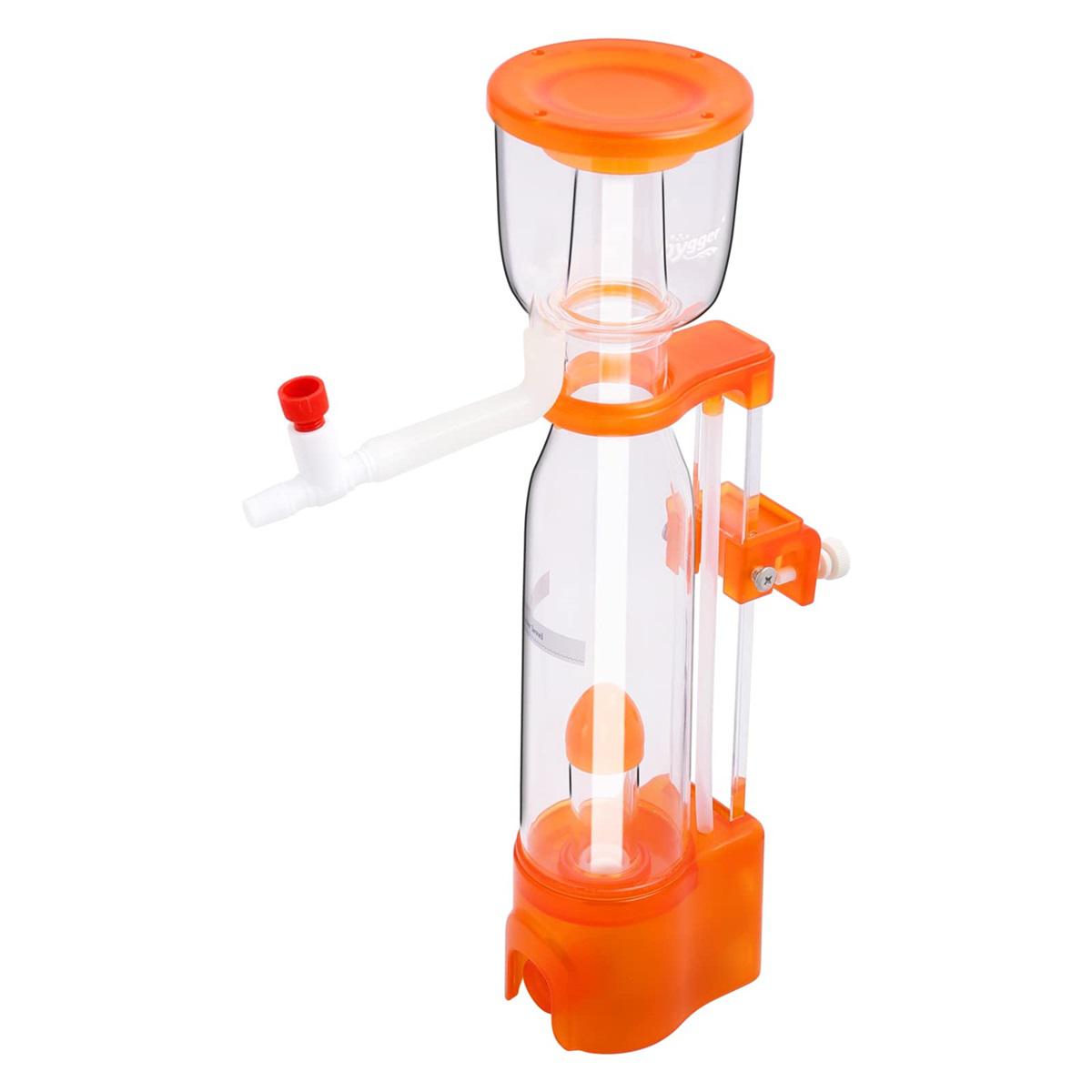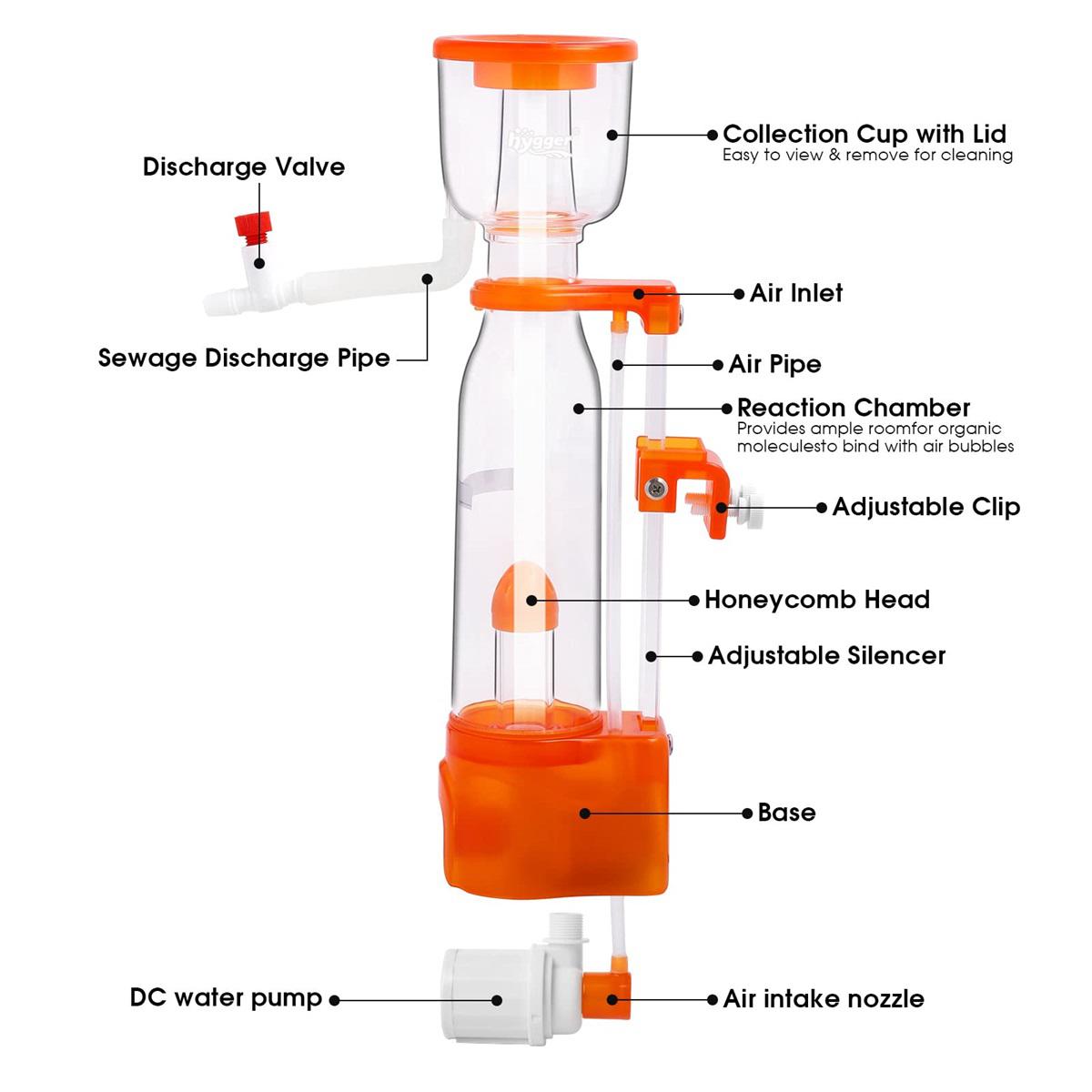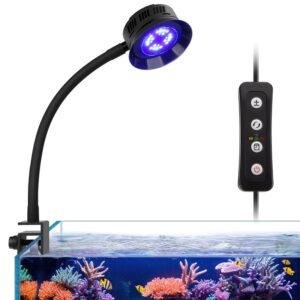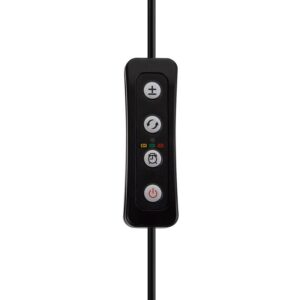Best 10 Saltwater Plants for Aquarium in 2023
Live saltwater plants are a great way to maintain a marine aquarium in a better shape. Otherwise, it’s hard to keep it in perfect balance. These saltwater plants for aquariums use extra nitrates and phosphates that are otherwise harmful to the tank environment. They also enable you to display your aesthetic sense because they are available in multiple colors and shapes.
With several benefits, care requirements, and many other aspects, we’ve selected the 10 best saltwater plants for aquariums in 2023. In conclusion, you will also find out which is easy to maintain and hard to grow in selected live saltwater plants.
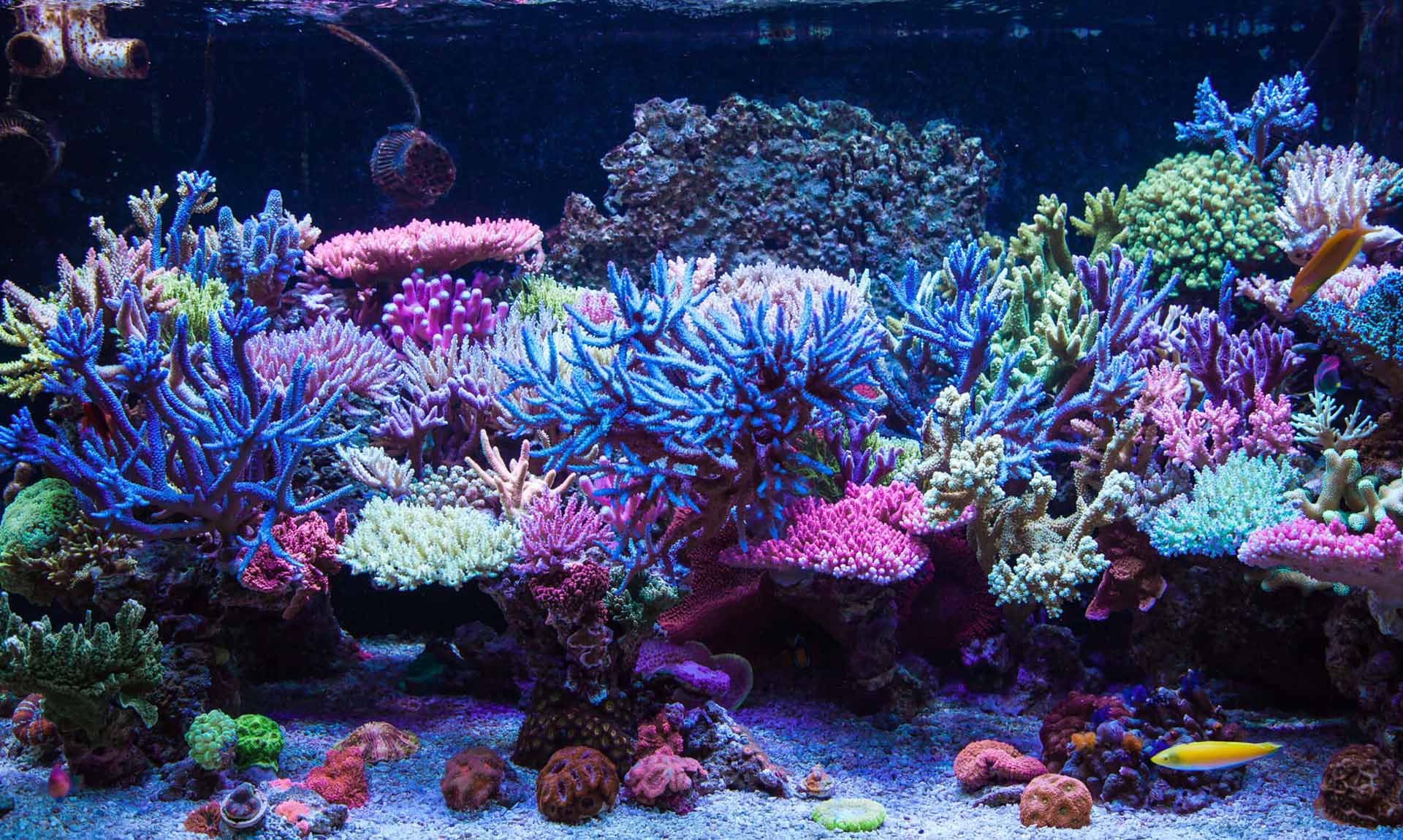
Live Saltwater Plants
Live saltwater plants have various types, characteristics, sources, and distribution. Knowing all of these details is better before growing them in your saltwater tank. All of these details are briefly in the following.
Algae
Characteristics
| Photosynthesis process for their food production | Rigid and thin |
| Sexual and asexual reproduction systems | No seeds |
| 5 major groups, i.e., Red algae, Diatoms, Brown algae, Green algae, and Dinoflagellates | No absolute structure |
Distribution
Marine algae grow throughout the world[1].
Source
It usually grows in intertidal zones, shallow coastal waters, open oceans, coral reefs, kelp forests, and rocky surfaces in marine habitats.
Seagrass
Seagrass is another live saltwater plant option. It’s a food source for many herbivores and helps to stabilize the overall tank habitat. It’s the only plant that bears the flowers undersea and has about 70 known species.
Characteristic
Seagrass has the following characteristics.
| Roots | Stems | Flowers | Can bear fruit |
| Leaves | Connected tissues | Special cells | Oxygen source |
| Special cells | Salinity tolerant | Roots | Acts as a habitat and food source |
Distribution
Seagrass grows in the coastal areas of 159 countries[3] on six continents except Antarctica.
Source
It grows at bays, coastal lines, intertidal regions, and up to a depth of 60 meters undersea.
Mangroves
Mangroves are hardy plants or shrubs that grow in extreme saline conditions. There are about 80 different[4] mangrove species present on the globe.
Characteristics
Here are some characteristics of mangroves.
| 2-90% salinity tolerance | Breathing roots that absorb the atmospheric oxygen | Have special salt-secreting glands on their leaves |
| Shallow roots | Wax-coted leaves that hinder the water removal from leaves |
Distribution
They are distributed from 25 degrees north to south. It grows 36.5% in Asia, 20.8% in North America, 18.7% in Oceans, 11.6% in African regions, and 12.4% in South America[2]. Sundarban, Bangladesh has the largest mangrove forest, while Indonesia has most mangroves.
Source
They grow in tropical and subtropical areas.
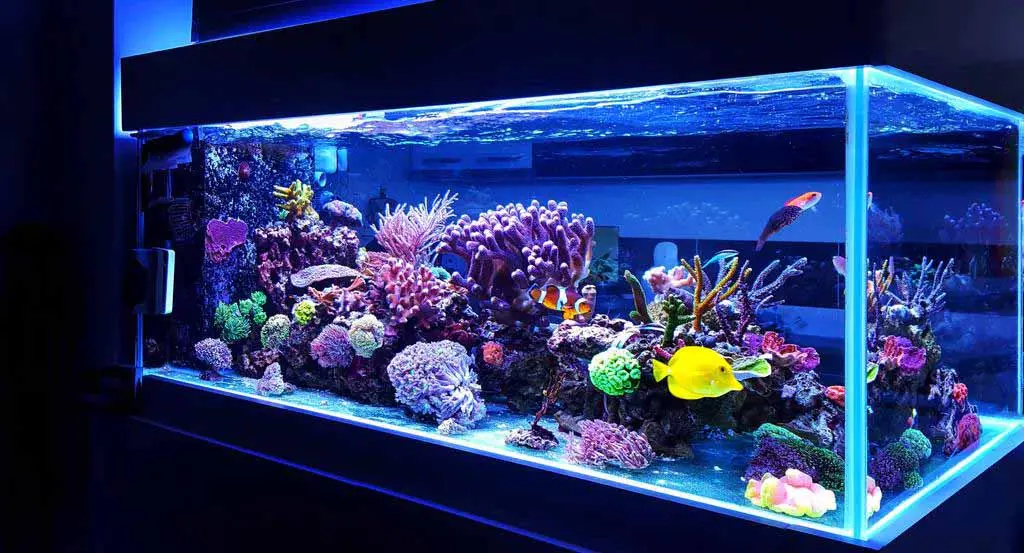
Is It Beneficial to Put Plants in a Saltwater Aquarium
There are several benefits that you can enjoy by growing live plants in your saltwater aquarium. Some of them are in the following.
Oxygenation
Growing live saltwater plants improves the oxygenation of the tank. These plants produce oxygen during photosynthesis, which helps to improve the overall tank health and reduce the oxygenation cost that is otherwise required.
Filtration
Saltwater plants also improve the filtration of an aquarium. They remove the nitrates, phosphates, and toxin elements from the aquarium.
Aesthetics
Live plants enhance the overall aesthetics of the tank. They enable you to decorate the tank according to your aesthetic sense because several colors and structured saltwater plants are available.
Shelter
Live saltwater plants also provide shelter to various organisms in the tank. Plants help to hide themselves from predators. It also provides a place to enjoy.
Control Over Algae Growth
It is tough to control algae growth. Algae use nutrients that are other organism’s requirements. These live saltwater plants provide a proper channel to use the extra nutrients.
pH Control
Live plants reject ammonia, ammonium, nitrates, and phosphates, and doing so helps to control the pH of the saline water tank.
10 Best Saltwater Plants Ideal for Aquariums
Halimeda or Money Plant
| Halimeda is one of the best live saltwater plants, a type of green algae classified as Bryopsidales, i.e., organisms that lack individual cells. Halimeda grows in the tropics. It is low-growing and has disc-like flattened leaves on string-like branches. Calcium deposits on its leaves. | 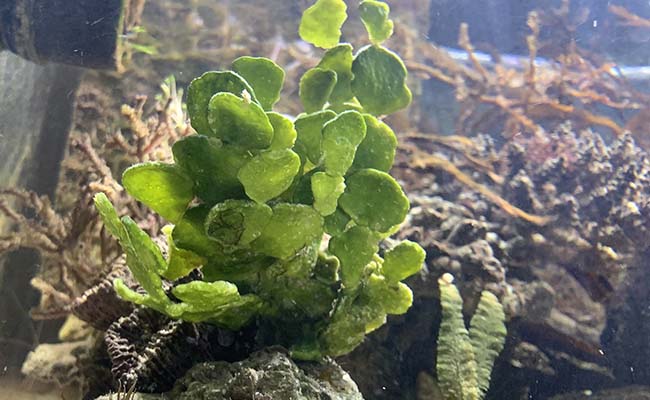 |
| Halimeda helps to keep the nutrient level balance in the saline water tank, along with phosphate and nitrate filtration and is also an excellent tool for the alkalinity test of the aquarium. It requires moderate pruning, regular calcium supply, moderate lighting, i.e., 2 watts per gallon, and moderate water flow. Its visuals and other benefits make it a suitable choice for saltwater tanks. | |
Mermaid’s Fan
| The mermaid’s fan is another eye-catching live saltwater plant for aquariums. This green algae belongs to the Udotea family. They grow in the Caribbean region. It has a short steam that ends up at a big fan-like leaf. It grows up to 6 to 8 inches. | 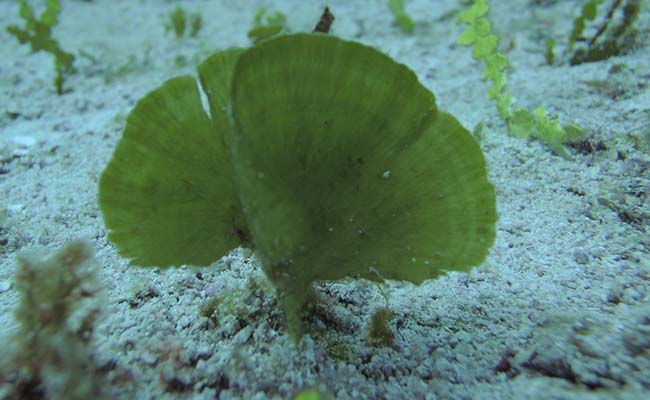 |
| It is commonly grown plant in tanks as a calcium-providing agent to other organisms and to add beautiful color in aquariums. 22 to 25 degrees Celsius temperature, 8.1 to 8.4 pH, proper calcium supply, and balanced nitrate and phosphate levels are optimum conditions for proper growth. Its color makes it one of the best choices among saltwater plants for aquariums in 2023. | |
Red Mangrove Propagule
| This beautiful saltwater plant belongs to the Rhizophoraceae family. They grow on the seashores of tropical and subtropical regions, especially the Caribbean, Central America, and tropical West Africa. Red Mangrove Propagule appears like green and brown cigars. They help to reduce algae growth and keep the water in the best condition by uptaking extra nitrates and phosphates. | 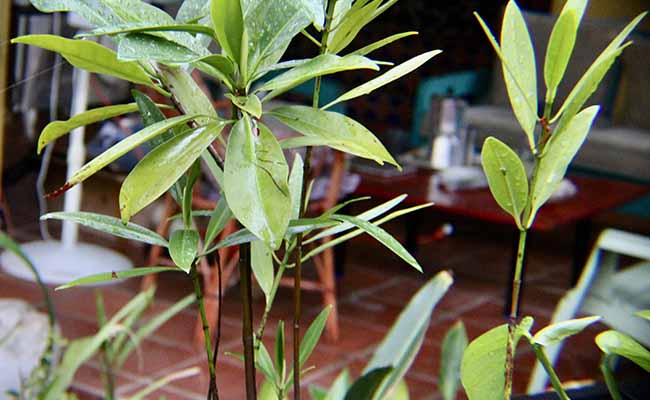 |
| You need to clean its leaves with fresh water a few times a week. Proper trimming and the time-to-time iron dose are also beneficial. They grow best between 22 – 25 degrees Celsius and 8.1 to 8.4 pH. It’s on the list of the best for 2023 for its beneficial role in aquarium maintenance. | |
Sea Lettuce
| Sea lettuce is a type of green algae that belongs to the Ulva genus. This seaweed grows in Africa, the Indian Ocean and Pacific islands, Australia, and UK coasts. They can grow up to 75 meters in depth. It mimics lettuce but has thin leaves. It removes extra nutrients and is a food source for herbivorous and omnivorous fish. | 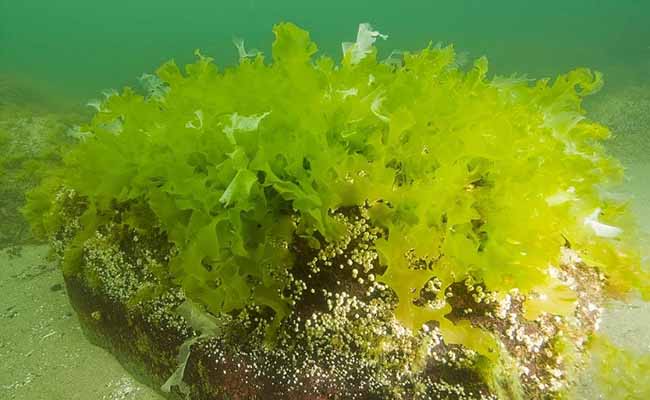 |
| It requires proper and intense light for longer periods and a 7.9 to 8.2 pH range. You can introduce this live saltwater plant in your aquarium for its natural filtration ability and as a food source. | |
Turtle Grass Shoots
| Turtle grass is another best choice among saltwater plants for your aquarium. It is a type of seagrass. You can recognize it by its thin, flat, and ribbon-like glass blades. Naturally, it inhabits the shallow and calm waters of Bermuda, Venezuela, Florida, the Gulf of Mexico, and the Caribbean Sea. | 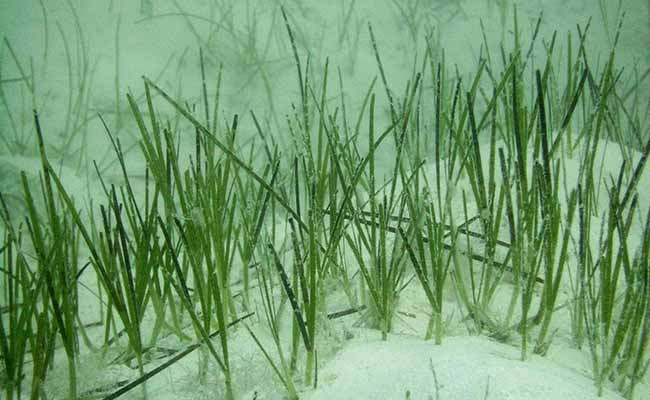 |
| Its presence in the tank helps to maintain the nutrient balance and water quality. It also acts as a food and shelter source for many organisms. You need to provide 8-10 hours of intense light and at least 6″ deep substrate for proper growth. Its hardy and drought-resistant nature makes it a suitable choice for your marine aquarium. | |
Dragon’s Tongue Algae
| Dragon’s Tongue Algae is a macroalgae. It has red fringes with orange at the tips. This algae grows in coral reefs, Rocky subtidal environments, and mudflats of the Tropical Atlantic Ocean, the Caribbean, and the Gulf of Mexico. | 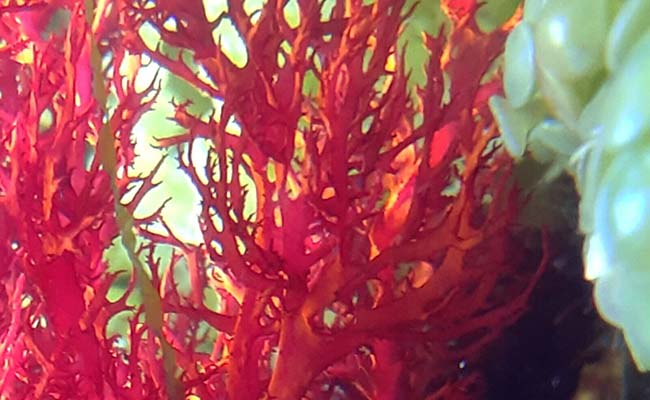 |
| It balances the nutrient level, acts as a natural filter, improves oxygenation, and enhances the overall aesthetics of any saltwater tank. Moderate lighting and water flow, in time water change, and the addition of iron supplement helps to thrive Dragon’s Tongue Algae. | |
Blue Hypnea Algae
| Blue Hypnea is another type of algae, also known as rhodophyte. Its bushy appearance in multiple colors makes it an attractive choice to ornament a saltwater aquarium. It naturally grows in tropical regions in different places, i.e., sewage-polluted areas, rocky intertidal benches, tidal zones, etc. | 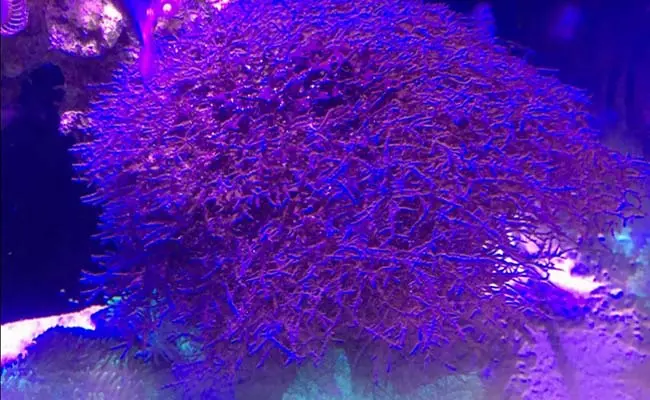 |
| They require a full spectrum bright light, frequent Iodine supplement, medium water temperature, and moderate flow for optimum growth. You can enjoy several benefits by growing this live saltwater plant, i.e., improved water quality, nitrate and phosphate control, and aesthetic enhancement. | |
Red Gracilaria Algae
| Red Gracilaria Algae is another rhodophyte, which has cylindrical red bushy branches. It naturally grows in wet sand, muddy, and hard substrata. The algae is a habitat of the northwest Pacific region, i.e., Japan, Korea, China, and Vietnam. | 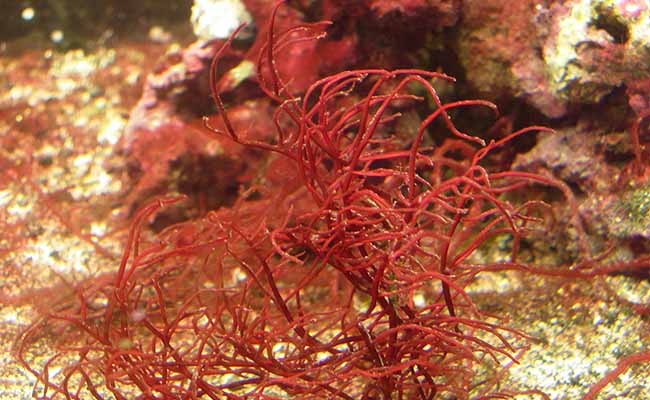 |
| It is a natural food source, fish immune booster, and water quality agent. You can witness its optimum growth rate at medium light, 60 to 70 degrees Fahrenheit, moderate flow rate, and have a proper check on phosphate. Its toxin-removal ability and control over pH make it a suitable choice. | |
Spaghetti Algae
| Spaghetti Algae is a seagrass that loosely floats in extreme saline conditions. This green filamentous loosely entangled grass gives a lively look to your saltwater aquarium. It often grows in brackish water conditions in sandy and rocky areas, and naturally grows in Europe and North America. | 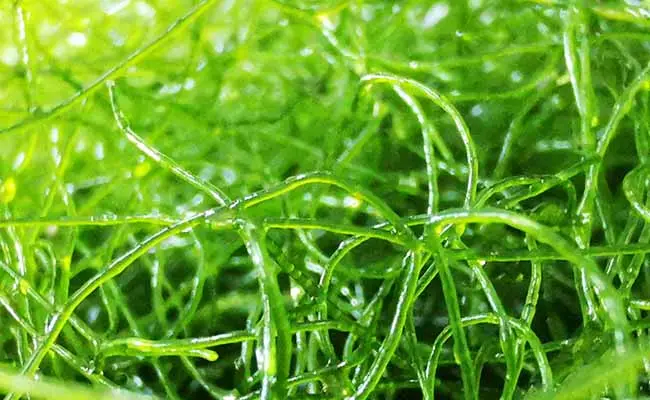 |
| It helps in fish tank filtration, pH level control, natural sink for nutrients, and habitat for many organisms. 16 hours of intense light, high flow, rock or sand for anchoring, and balanced nutrients are required for optimal plant growth. Its ability to control the water’s pH makes it the best choice among saltwater plants for aquariums. | |
Tufted Joint Algae
| Tufted Joint Algae is another macroalgae in the list of the best live saltwater plants. It appears like green, prehistoric-look, and segmented. Tufted Joint algae grow on rocks in tidepools at 30-meter depth. It naturally grows in the Caribbean, Atlantic Islands, and Mexican Gulf region. | 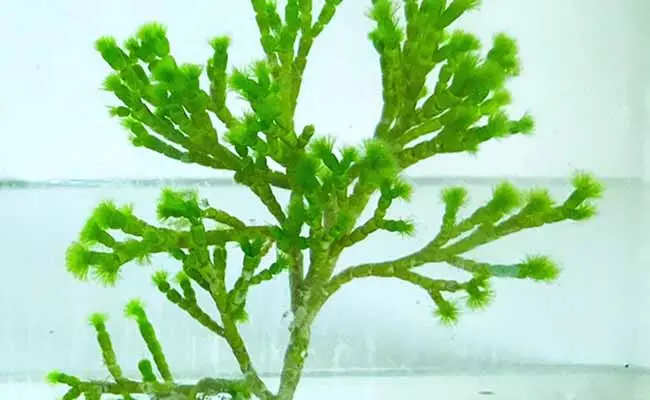 |
| They improve the water quality and oxygenation. It also provides a unique look to your aquarium. You need to provide moderate lighting, a high flow rate, 8 to 8.4 pH, iron, magnesium, and trace element supplements. If you are late in feeding, then it can serve as a food source. This thing makes it a suitable choice for saltwater aquariums. | |
Final thoughts
Live saltwater plants are beneficial in multiple aspects for a marine aquarium. Besides keeping the aquarium in shape, they also help make it a centerpiece. Among the 10 best saltwater plants, Halimeda or Money Plant, Mermaid’s Fan, Red Mangrove Propagule, Sea Lettuce, and Turtle Grass Shoots are easy to grow. The rest of the plants require some extra care.
[1]The Law of Temperature Connected with the Distribution of the Marine Algae
[2].Mapping the global distribution of mangrove forests at 10-m resolution
[3]Seagrass: 10 facts about an ocean plant under threat
[4]What is a mangrove forest

